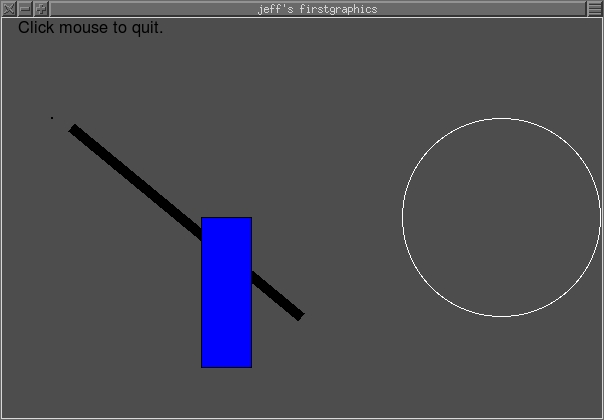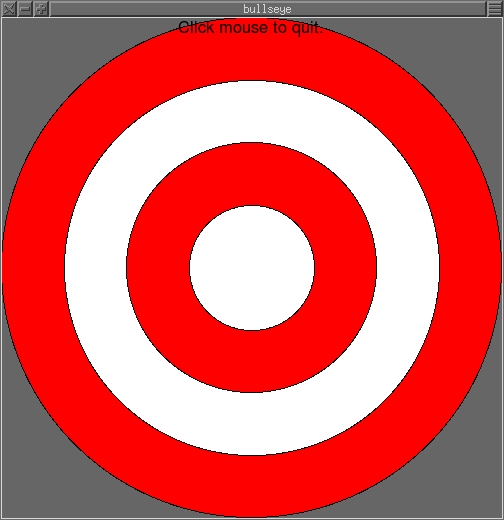knerr cs21 notes...
back to schedule
WEEK04: computer graphics, using objects
---------------------------------------------------------------
M: what is an object? simple computer graphics
LAB3: due Tuesday
QUIZ 2 this Friday
- data types we've seen so far: int, float, string, boolean
- each has certain kinds of data/values and operations
- functions we've seen so far: type(5), len("hello"), range(10)
- objects combine data and functions (methods) into one thing
RADIO EXAMPLE:
- for a real radio, you can turn it on/off, change the
volume, change the station
- if you wrote a program to act like a radio (like Pandora)
you would want similar features:
myradio = Radio() <--- constructor creates object
with initial data and methods
- use dot operator to change the object data (manipulate the
object)
myradio.setVolume(10)
myradio.setStation(91.5)
anotherradio = Radio()
anotherradio.setStation(90.1)
==> call object methods to change the object
COMPUTER GRAPHICS:
- we are using the graphics module from the Zelle book
from graphics import *
- in the graphics window, x increases to the right, y increases
down, so the point 0,0 is the top left corner
- try some simple objects: GraphWin, Point, Line, Circle:
>>> from graphics import *
>>> w = GraphWin()
>>> p = Point(50,90)
>>> p.draw(w)
>>> c = Circle(p, 20)
>>> c.setFill("red")
>>> c.draw(w)
OBJECT-ORIENTED PROGRAMMING
- build complex systems out of simple objects
- more intuitive (circle object, fill, draw), objects in code
correspond to real-world objects
- reusability (design objects that can be used in other programs)
- we'll design and create our own objects later this semester
YOUR TURN
- see if you can write programs to make these images (use
/home/jk/inclass/firstgraphics.py as a starting point):



